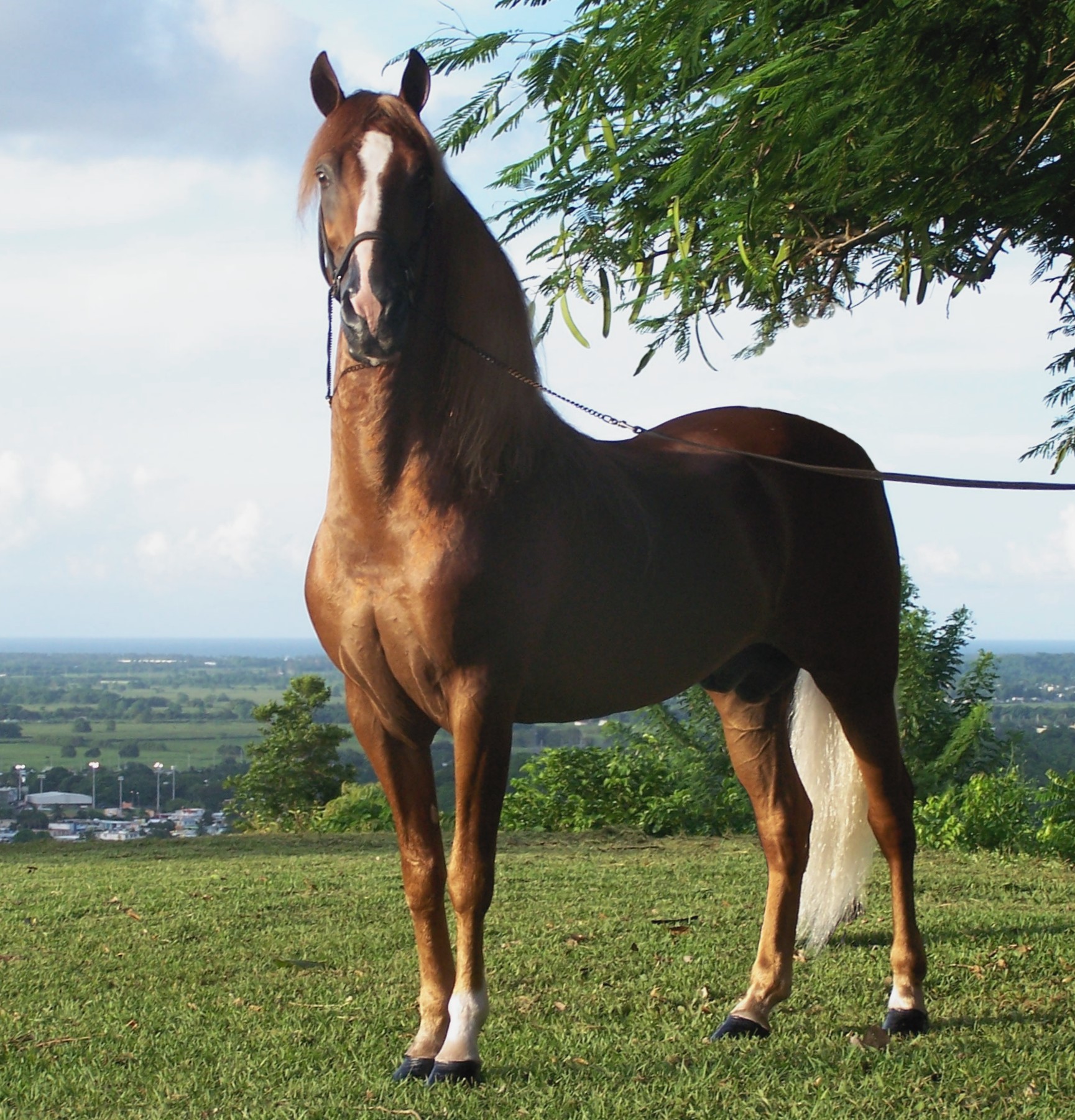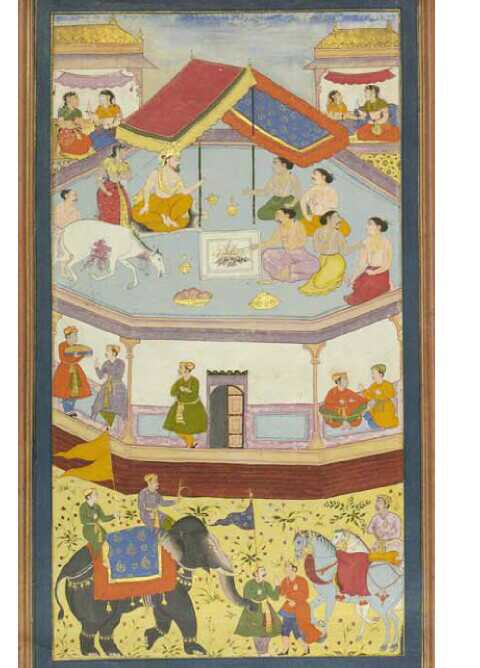|
Völsa þáttr
''Vǫlsa þáttr'' is a short story which is only extant in the ''Flateyjarbók'' codex, where it is found in a chapter of ''Óláfs saga helga''. It is probably from the fourteenth century but takes place in 1029, when Scandinavia was still largely pagan, and it appears to preserve traditions of a pagan phallos cult, the ''vǫlsi'' (see also blót). The worship It relates that an old man and an old woman lived with their brisk son and intelligent daughter on a promontory far from other people. They also had a male and a female thrall. When the thrall had butchered a horse and was to throw away the horse's penis, the boy ran past, took it, and went to the place where his mother, sister, and the slave woman were sitting. There he joked at the slave woman, telling her the organ would not be dull between her legs, whereupon the slave woman laughed. The daughter asked her brother to throw away the disgusting object, but her old mother rose and said it was a useful thing that should n ... [...More Info...] [...Related Items...] OR: [Wikipedia] [Google] [Baidu] |
Flateyjarbók
''Flateyjarbók'' (; "Book of Flatey") is an important medieval Icelandic manuscript. It is also known as GkS 1005 fol. and by the Latin name ''Codex Flateyensis''. It was commissioned by Jón Hákonarson and produced by the priests and scribes Jón Þórðarson and Magnús Þórhallsson. Description ''Flateyjarbók'' is the largest medieval Icelandic manuscript, comprising 225 written and illustrated vellum leaves. It contains mostly sagas of the Norse kings as found in the ''Heimskringla'', specifically the sagas about Olaf Tryggvason, St. Olaf, Sverre, Hákon the Old, Magnus the Good, and Harald Hardrada. But they appear here expanded with additional material not found elsewhere (some of it being very old) along with other unique differences. Most—but not all—of the additional material is placed within the royal sagas, sometimes interlaced. Additionally, the manuscript contains the only copy of the eddic poem ''Hyndluljóð'', a unique set of annals from creation to 13 ... [...More Info...] [...Related Items...] OR: [Wikipedia] [Google] [Baidu] |
Óláfs Saga Helga
''Óláfs saga helga'' or the ''Saga of St. Olaf'', written in several versions, is one of kings' sagas (''konunga sǫgur'') on the subject of King Olaf Haraldsson the Saint. List of saga versions *''Oldest Saga of St. Olaf'', ca. 1190, mostly lost. *'' Legendary Saga of St. Olaf'', ca. 1210. *''Óláfs saga helga'' by Styrmir Kárason, ca. 1220, mostly lost. *'' Separate Saga of St. Olaf'', by Snorri Sturluson, ca. 1225. *''Óláfs saga helga'' in ''Heimskringla'', by Snorri Sturluson, ca. 1230. *''Óláfs saga helga'' in ''Flateyjarbók'', an expanded version of the ''Separate Saga of St. Olaf''. Overview The saga draws from skaldic poetry and Latin hagiography, with embellishments from popular oral legends. The earliest version, the so-called ''Oldest Saga of St. Olaf'' probably written in Iceland, has not survived except in a few fragments. The next version, commonly known as the '' Legendary Saga of St. Olaf'' (also designated ''Helgisagan um Ólaf digra Haraldsson'' "Holy ... [...More Info...] [...Related Items...] OR: [Wikipedia] [Google] [Baidu] |
Scandinavia
Scandinavia; Sámi languages: /. ( ) is a subregion in Northern Europe, with strong historical, cultural, and linguistic ties between its constituent peoples. In English usage, ''Scandinavia'' most commonly refers to Denmark, Norway, and Sweden. It can sometimes also refer more narrowly to the Scandinavian Peninsula (which excludes Denmark but includes part of Finland), or more broadly to include all of Finland, Iceland, and the Faroe Islands. The geography of the region is varied, from the Norwegian fjords in the west and Scandinavian mountains covering parts of Norway and Sweden, to the low and flat areas of Denmark in the south, as well as archipelagos and lakes in the east. Most of the population in the region live in the more temperate southern regions, with the northern parts having long, cold, winters. The region became notable during the Viking Age, when Scandinavian peoples participated in large scale raiding, conquest, colonization and trading mostly throughout Eu ... [...More Info...] [...Related Items...] OR: [Wikipedia] [Google] [Baidu] |
Blót
(Old Norse) and or ( Old English) are terms for "blood sacrifice" in Norse paganism and Anglo-Saxon paganism respectively. A comparanda can also be reconstructed for wider Germanic paganism. A ' could be dedicated to any of the Germanic gods, the spirits of the land, and to ancestors. The sacrifice involved aspects of a sacramental meal or feast. Etymology The word is an Old Norse strong neuter noun (genitive ). The corresponding Old English neuter (genitive ) may be influenced by Old Norse; the Old English gospels have prefixed "sacrifice". The reconstructed Proto-Germanic form of the noun is "sacrifice, worship". Connected to this is the Proto-Germanic strong verb with descendants in Gothic (), Old Norse , Old English and Old High German , all of which mean "to sacrifice, offer, worship". The word also appears in a compound attested in Old Norse as "house of worship" and in Old High German as "temple". With a different nominative affix, the same stem is fou ... [...More Info...] [...Related Items...] OR: [Wikipedia] [Google] [Baidu] |
Thrall
A thrall ( non, þræll, is, þræll, fo, trælur, no, trell, træl, da, træl, sv, träl) was a slave or serf in Scandinavian lands during the Viking Age. The corresponding term in Old English was . The status of slave (, ) contrasts with that of the freeman (, ) and the nobleman (, ). The Middle Latin rendition of the term in early Germanic law is . Etymology Thrall is from the Old Norse , meaning a person who is in bondage or serfdom. The Old Norse term was lent into late Old English, as . The term is from a Common Germanic Proto-Germanic (abbreviated PGmc; also called Common Germanic) is the reconstructed proto-language of the Germanic branch of the Indo-European languages. Proto-Germanic eventually developed from pre-Proto-Germanic into three Germanic bra ... ("runner", from a root "to run"). Old High German had a cognate, , meaning "servant, runner". The English derivation ''thraldom'' is of High Medieval date. The verb "to enthrall" is of Early M ... [...More Info...] [...Related Items...] OR: [Wikipedia] [Google] [Baidu] |
Horse Slaughter
Horse slaughter is the practice of slaughtering horses to produce meat for consumption. Humans have long consumed horse meat; the oldest known cave art, the 30,000-year-old paintings in France's Chauvet Cave, depict horses with other wild animals hunted by humans. Equine domestication is believed to have begun to raise horses for human consumption. The practice has become controversial in some parts of the world due to several concerns: whether horses are (or can be) managed humanely in industrial slaughter; whether horses not raised for consumption yield safe meat, and whether it is appropriate to consume what some view as a companion animal. __TOC__ Methods In most countries where horses are slaughtered for food, they are processed in industrial abattoirs similarly to cattle. Typically, a penetrating captive bolt gun or gunshot is used to render the animal unconscious. The blow (or shot) is intended to kill the horse instantly or stun it, with exsanguination (bleeding ou ... [...More Info...] [...Related Items...] OR: [Wikipedia] [Google] [Baidu] |
Horse's Penis
A stallion is a male horse that has not been gelded (castrated). Stallions follow the conformation and phenotype of their breed, but within that standard, the presence of hormones such as testosterone may give stallions a thicker, "cresty" neck, as well as a somewhat more muscular physique as compared to female horses, known as ''mares'', and castrated males, called ''geldings''. Temperament varies widely based on genetics, and training, but because of their instincts as herd animals, they may be prone to aggressive behavior, particularly toward other stallions, and thus require careful management by knowledgeable handlers. However, with proper training and management, stallions are effective equine athletes at the highest levels of many disciplines, including horse racing, horse shows, and international Olympic competition. "Stallion" is also used to refer to males of other equids, including zebras and donkeys. Herd behavior Contrary to popular myths, many stallions ... [...More Info...] [...Related Items...] OR: [Wikipedia] [Google] [Baidu] |
Olaf II Of Norway
Olaf II Haraldsson ( – 29 July 1030), later known as Saint Olaf (and traditionally as St. Olave), was King of Norway from 1015 to 1028. Son of Harald Grenske, a petty king in Vestfold, Norway, he was posthumously given the title '' Rex Perpetuus Norvegiae'' ( en, Eternal/Perpetual King of Norway) and canonised at Nidaros (Trondheim) by Bishop Grimkell, one year after his death in the Battle of Stiklestad on 29 July 1030. His remains were enshrined in Nidaros Cathedral, built over his burial site. His sainthood encouraged the widespread adoption of Christianity by Scandinavia's Vikings/Norsemen. Pope Alexander III confirmed Olaf's local canonisation in 1164, making him a recognised saint of the Catholic Church and started to be known as ''Rex Perpetuus Norvegiae'' – ''eternal king of Norway''. Following the Reformation he was a commemorated historical figure among some members of the Lutheran and Anglican Communions. The saga of Olav Haraldsson and the legend of Ola ... [...More Info...] [...Related Items...] OR: [Wikipedia] [Google] [Baidu] |
Canute The Great
Cnut (; ang, Cnut cyning; non, Knútr inn ríki ; or , no, Knut den mektige, sv, Knut den Store. died 12 November 1035), also known as Cnut the Great and Canute, was King of England from 1016, King of Denmark from 1018, and King of Norway from 1028 until his death in 1035. The three kingdoms united under Cnut's rule are referred to together as the North Sea Empire. As a Danish prince, Cnut won the throne of England in 1016 in the wake of centuries of Viking activity in northwestern Europe. His later accession to the Danish throne in 1018 brought the crowns of England and Denmark together. Cnut sought to keep this power-base by uniting Danes and English under cultural bonds of wealth and custom. After a decade of conflict with opponents in Scandinavia, Cnut claimed the crown of Norway in Trondheim in 1028. The Swedish city Sigtuna was held by Cnut (he had coins struck there that called him king, but there is no narrative record of his occupation). In 1031, Malcolm II o ... [...More Info...] [...Related Items...] OR: [Wikipedia] [Google] [Baidu] |
Ashvamedha
The Ashvamedha ( sa, अश्वमेध, aśvamedha, translit-std=IAST) was a horse sacrifice ritual followed by the Śrauta tradition of Vedic religion. It was used by ancient Indian kings to prove their imperial sovereignty: a horse accompanied by the king's warriors would be released to wander for a year. In the territory traversed by the horse, any rival could dispute the king's authority by challenging the warriors accompanying it. After one year, if no enemy had managed to kill or capture the horse, the animal would be guided back to the king's capital. It would be then sacrificed, and the king would be declared as an undisputed sovereign. The best-known text describing the sacrifice is the '' Ashvamedhika Parva'' ( sa, अश्वमेध पर्व), or the "Book of Horse Sacrifice," the fourteenth of eighteen books of the Indian epic poem ''Mahabharata''. Krishna and Vyasa advise King Yudhishthira to perform the sacrifice, which is described at great length. T ... [...More Info...] [...Related Items...] OR: [Wikipedia] [Google] [Baidu] |




